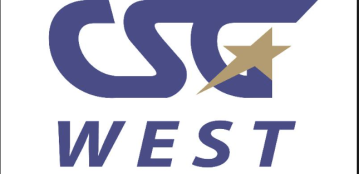When the words school choice are said… what comes to mind? We know that the majority of charter schools are privately-managed. The evolution of the school choice movement has resulted in charter-management organizations (CMOs) coming on the scene and essentially franchising schools like McDonalds and Burger King all over the United States. Considering that charter schools are becoming less popular and they often neglect to deal directly with the challenges of inequality and poverty while subscribing to the achievement ideology… there are many people searching for alternative school models.
Are there democratically-controlled school choice alternatives to the private control that dominates the current education reform conversation (charters and vouchers) that address the needs of students faced with unequal conditions? YES! The California NAACP believes that community schools are one such option. At the recent California NAACP convention in Los Angeles, the following resolution was passed.
RESOLUTION 13. SUPPORTING COMMUNITY-SCHOOLS AS A COMPREHENSIVE SOLUTION FOR QUALITY EDUCATION
WHEREAS, in the American public education system, longstanding educational opportunity gaps have persisted in schools. These gaps are not a coincidence, as the United States has a long history of legislative, executive, and judicial enactments that have codified unequal provision of resources for schools.
WHEREAS, at a time when the nation’s K-12 students are now “majority–minority” and racialized gaps in student achievement, income, wealth are on the rise, the continued opportunity gap in schools has created a climate where communities are restless for alternatives.
WHEREAS, in some quarters this has manifested in increased political support for market-based approaches to education (i.e. school vouchers and charters) that are run by for-profit and non-profit organizations. The alternative to less direct democratic control of public schools is an increased role for democracy in neighborhood Community Schools.
WHEREAS, the roots of Community Schools go back to the early 1900s, when progressive reformers argued that bringing health and educational services to working families in urban neighborhoods would improve student success. More recently, one form of the model was popularized by Dr. James Comer who has focused on developing “the whole child” by linking academic growth with emotional wellness and social development in a collaborative school culture.
WHEREAS, research on Community Schools has demonstrated improvements in student achievement, dropout rates, student behavior, attendance, parental involvement, graduation rates, college going rates and school accountability ratings.
WHEREAS, a major challenge for the neighborhood Community School model has been implementation and the availability of resources to implement the elements demonstrated in the research to improve student and school success.
WHEREAS, Community Schools should be a part of a network that impacts the whole system and is supported by sustainable investments locally. Additionally, the authority of state legislative bodies should support and fund the planning, development, implementation and evaluation of Community Schools.
WHEREAS, Community Schools should include curriculum that is engaging, culturally relevant and challenging. A robust selection of classes and afterschool programs in the arts, languages, ethnic studies, AP, IB, and honors courses as well as services, for example to support special education students.
WHEREAS, Community Schools should include emphasis on high quality teaching and critical thinking, and not on high stakes testing. Community Schools focus on formative and summative teacher-driven assessments are used to help teachers meet the needs of students.
WHEREAS, Community Schools should empower educators with a real voice in professional development.
WHEREAS, Community Schools should have “wrap-around” supports such as health care, eye care and social and emotional services that support student success. These supports should be readily available before, during and after school and are provided year-round to the full community.
WHEREAS, Community Schools should have positive discipline practices such as restorative justice and social and emotional learning supports are stressed so students grow and contribute to the school community and beyond.
WHEREAS, Community Schools should promote authentic parent and community engagement so the full community actively participates in planning and decision-making. This process recognizes the link between the success of the school and the development of the community as a whole.
WHEREAS, Community Schools should have inclusive and diverse school leadership who are committed to making the Community School strategy integral to the school’s mandate and daily activities.
WHEREAS, Community Schools, if implemented properly, are comprehensive solution to problems facing public schools, especially in low-income communities. If scaled-up, Community Schools are a component of a viable long-term strategy to expand educational opportunities and promote neighborhood well-being. They also have the potential to realize the promise of developing a set of best practices to be shared locally, statewide and nationally that have been promised by school choice advocates.
THEREFORE, BE IT RESOLVED communities should have the primary voice in community schools and not non-profit and for-profit organizations.
BE IT FURTHER RESOLVED, that the California Hawaii NAACP and its units support parents who desire community schools in their neighborhood.
BE IT FINALLY RESOLVED, the California Hawaii NAACP commits to helping local branches hold policymakers and districts accountable for providing the resources to implement neighborhood community schools.
In closing, remember the old political adage, “You can’t fight something with nothing.”
 During a recent Council of State Governments West eCademy webcast (available below), presenters reviewed alternative measures for school accountability, community schools, teacher quality assessment and student achievement assessment. A national cadre of experts discussed steps legislators and communities can take, from a policy standpoint, to encourage and support local assessment and accountability measures.
During a recent Council of State Governments West eCademy webcast (available below), presenters reviewed alternative measures for school accountability, community schools, teacher quality assessment and student achievement assessment. A national cadre of experts discussed steps legislators and communities can take, from a policy standpoint, to encourage and support local assessment and accountability measures.
You must be logged in to post a comment.